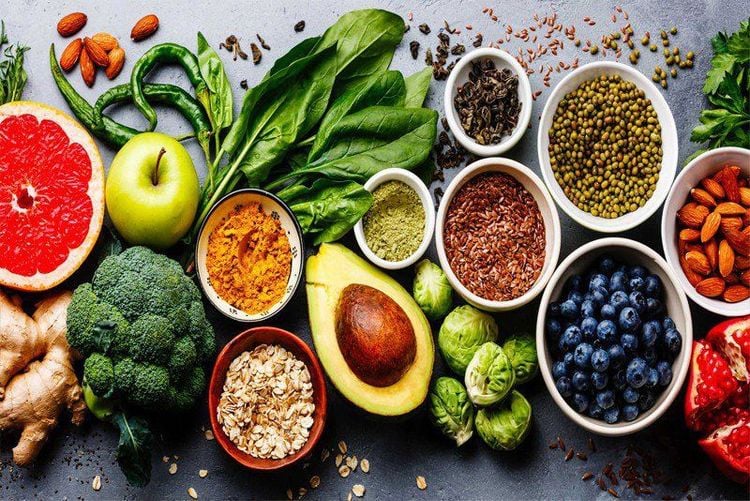This is an automatically translated article.
The situation of children with constipation leading to bloating and gas makes many parents feel worried, not knowing how to overcome this situation. However, building a menu for children with constipation will help them get rid of this condition effectively.
1. Recognizing constipated children
Symptoms of a child with constipation may include :
The child has bowel movements less than twice a week Passing stools that are dry or lumpy like goat poop Every time the child is uncomfortable, has anal pain If the child has been talking baby will tell you he can't have a bowel movement Baby constantly changing position, straining, bending buttocks to push Baby's stomach is mildly distended, bloating There is stool in the child's underwear that looks like diarrhea If If your child avoids or delays having a bowel movement, he or she may develop constipation.
The cause of constipation in children can be due to:
The main cause is an imbalance of intestinal microflora. A healthy gut helps all systems function like a well-oiled machine. Although a number of external factors may be involved, in general, a healthy gut promotes healthy elimination patterns.... In infants the cause is often formula-fed. Some formulas focus too much on a few essential nutrients leading to an imbalance of nutrients and when taken by babies can cause constipation but not all. Children do not eat enough fiber, do not drink enough water, become dehydrated. Children with Celiac disease, congenital dilated colon (Hirschsprung) Children with disorders that affect the brain and spine, such as spina bifida, children with spinal cord or brain injuries Children with conditions affect their metabolism, such as diabetes; conditions that affect hormones, such as hypothyroidism; problems that can block or narrow the colon or rectum, including tumors Children with food allergies . Constipation that occurs around the time a mother is changing her baby's diet from breast milk to solid foods Stress and emotional sensitivity can also play a role in kicking the habit. The gut is a sensitive organ and stress can cause them to stop working.... Constipation can be caused by certain medications your child is taking.
2. Tips on menus for children with constipation
2.1. Fiber
Depending on the age and sex of the child, children need about 14 to 30.8 grams of fiber per day. This recommendation does not apply to infants under 1 year of age. Your child's doctor can tell you what foods your baby should eat and whether you need to change the type of milk you're giving your baby.
Talk to your pediatrician or dietitian to create a meal plan with the right amount of fiber for your family. Remember to add fiber to your family's diet a little at a time so everyone gets used to the change.
Good sources of fiber are:
Whole grains: like whole wheat bread, oatmeal Legumes like: black beans, lentils, soybeans and chickpeas Fruits like strawberries, blueberries, apples, oranges and pears Vegetables, such as carrots, broccoli, green beans and broccoli Nuts such as: almonds, peanuts, and pecans

Bổ sung thực phẩm giàu chất xơ vào thực đơn cho trẻ táo bón
2.2. Ingredients in the diet of children with constipation
Veal meat Poultry with skin on Bread should be made from whole wheat, rye or wheat Caviar in the diet menu should be low in fat Dairy products for daily use In the menu there are dishes containing millet, buckwheat, barley and pearl barley. Limit the use of rice, tapioca porridge, vermicelli, pho. Constant ingredients: butter and sunflower oil; Vegetables; natural fruit juice.
2.3. Give your child plenty of water to drink
If your child is dehydrated, give your child plenty of water and other liquids, such as fruit juices, naturally sweetened vegetables, and clear soups to help the fiber work better.
Drinking enough water and other fluids also helps to avoid dehydration. Drinking enough water is good for the family's overall health and can help avoid constipation. Ask your pediatrician about how much fluid your child should drink each day based on his or her size, health, activity level, and the climate in which your family lives.
2.4. Foods to avoid when your child is constipated
To help prevent or relieve constipation, your child should avoid foods with little or no fiber, such as:
French fries Fast food Meat Processed foods, such as certain meals frozen food and snacks, hot dogs.
3. Suggested menu for children with constipation
Any menu for children with constipation must follow the following principles:
If children under 6 months of age are still breastfed: Breastfeeding mothers not only need to follow the baby's menu but also need to Follow your own menu. Add cellulose-rich vegetables, citrus fruits. Children under 3 years old are asked to put on the menu more vegetable dishes, baked in the oven. You can find many interesting recipes like vegetable pancakes, soups, casseroles, steamed omelettes and dried fruit preparations, and more. Older children (3 years old and up) are encouraged to eat vegetables raw without chopping. Meat in the menu for children with constipation is recommended about once a week. For the rest of the days, it is best to give preference to low-fat fish in boiled or grilled form. It is necessary to remove from the child's menu foods that are too fatty. Children should be fed in small portions 4-6 times a day. Here are some menus for children with constipation:
3.1. Menu for children with constipation in breakfast
Breakfast is very important because it is a source of energy for the whole day, you should let your baby eat according to his strength. You can feed your baby one of the following:
Steamed oatmeal, pumpkin or squash pancakes, Pancakes, steamed fish ribs, green tea; Buckwheat porridge Millet porridge, cheese, a mixture of prunes and raisins Scrambled eggs Watered millet porridge with honey, grilled fish, Buckwheat porridge, boiled veal, raisin sauce Chicken porridge, pork porridge, beef noodle soup

Thực đơn cho trẻ táo bón với món cháo kê cách thủy với mật ong
3.2. Lunch menu
With lunch, the baby should only eat just enough, not too full. The nutritional value of lunch accounts for about 30 - 35% of the baby's food for the day.
European dishes:
Vegetable soup, barley porridge with cutlets, carrot juice with residue Soup-pure pureed from pumpkin, turkey stew with vegetables, lettuce Beets, barley porridge with turkey, tomato juice carrot-pumpkin; Soup with pearl barley, grilled chicken, vegetable stew Chicken cutlet with buckwheat porridge, vegetable salad Vegetable soup, boiled chicken with cauliflower, dish of dried fruit Soup with cauliflower, steamed cutlet with onion and dill, steamed oatmeal, salad Asian dishes:
Braised fish, boiled spinach soup, rice Stir-fried beef with vegetables, spinach soup, rice Stir-fried chicken breast with mushrooms, perch soup with vegetables, rice Eggs Stir-fried meat with tomato, watercress soup with meat, rice Tofu stuffed with sauce, shrimp soup with squash, rice
3.3. Dinner menu
A light dinner with healthy foods is a very reasonable choice. Nutrients in the evening meal make up 30% of a child's total food intake throughout the day. Children should not be forced to eat too full, it will make them secret, indigestion, even flatulence, abdominal distension, affecting the child's sleep at night.
European dishes:
Buckwheat porridge with boiled fish yogurt mixed with raisins. Steamed barley porridge, chicken stew with vegetables in kefir, green tea. Wheat porridge with stewed turkey. Cheese casserole, yogurt, green tea Corn porridge, fish balls, Turkey stew with raisins and dried apricots, yogurt Asian dishes:
Boiled vegetables, a piece of fish grilled without oil or steamed, rice Chicken soup with mushrooms, baby corn, boiled pumpkin, light braised meat Noodles with minced meat sauce, boiled broccoli, fruit dessert
3.4. Mid-afternoon snack
Mothers can give their children extra snacks when they wake up. In Vietnam, it is usually seasonal fruits and vegetables (should be eaten whole instead of squeezing water to increase the amount of fiber absorbed into the body), dairy products such as yogurt or cheese.
Western countries apply the following menu:
Cheese with honey Baked apples Yogurt with homemade jam Orange jam, crackers; Broccoli and carrot salad with lean sour cream Mixture of dried apricots with raisins and figs; Fresh cottage cheese, apple sauce Yogurt with jelly from prunes Rye bread with jam Since each child has his or her own circadian rhythm, parents should monitor closely, if the child eats well, the child is happy, playing and playing. Smile should not be worried, even if the child does not have a bowel movement on the second day. Adhering to the right diet and foods is a good preventative measure that not only keeps your child from becoming constipated, but also avoids future digestive problems.
Besides, your baby needs to add necessary micronutrients such as: Zinc, selenium, chromium, vitamins B1 and B6, ginger, acerola fruit extract (vitamin C), ... to improve taste, eat delicious, reach the correct height and weight and exceed the standard, have a good immune system, increase resistance to less minor illnesses as well as less digestive problems.
The improvement of symptoms can take place for a long time, so it is recommended that parents be calm and persistent when supplementing with nutrients for children, even through eating or functional foods. In particular, the use of functional foods should choose those of natural origin that are easily absorbed, do not allow simultaneous use of many types or continuously change the types of functional foods.
To have more knowledge about taking care of children by age, you should regularly visit the website vimec.com and make an appointment with the leading doctors, Pediatricians - Nutritionists when you need advice.













